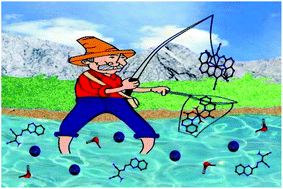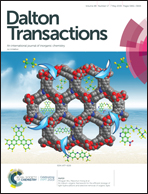A quinoxaline–diaminomaleonitrile conjugate system for colorimetric detection of Cu2+ in 100% aqueous medium: observation of aldehyde to acid transformation†
Abstract
In this work, we have strategically incorporated a quinoxaline derivative and a diaminomaleonitrile moiety to construct a chemosensor, 2-amino-3-[(quinoxalin-2-ylmethylene)-amino]-but-2-enedinitrile (H2qm). The notable feature of this strategy is to generate a highly conjugated Schiff base platform with interesting binding properties. Remarkably, H2qm exhibited a visual sensing ability towards Cu2+ in 100% aqueous medium. The effectiveness of the chemosensor has been demonstrated by utilizing it to determine the Cu2+ concentration in real samples. Interestingly, the reaction between H2qm and Cu(ClO4)2·6H2O in DMSO yielded a quinoxaline-2-carboxylic acid based compound and single crystal X-ray diffraction analysis unveiled the resulting structure as [(qa)2Cu(H2O)2] (Hqa = quinoxaline-2-carboxylic acid).



 Please wait while we load your content...
Please wait while we load your content...